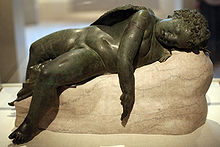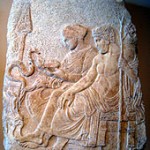 When people think about ethics, they usually focus on the evaluation of good or bad behaviors in the waking state. But what about the ethical status of the one-third of our lives that we spend in sleep? Do we have any ethical duties or obligations relating to sleep? Do dreamers have any basic rights or responsibilities?
When people think about ethics, they usually focus on the evaluation of good or bad behaviors in the waking state. But what about the ethical status of the one-third of our lives that we spend in sleep? Do we have any ethical duties or obligations relating to sleep? Do dreamers have any basic rights or responsibilities?
Many people treat dreaming as a kind of ethical “free-fire zone,” where moral boundaries don’t apply and anything goes. The ancient Greek philosopher Plato said that when we sleep the “rational, gentle, and dominant” part of the mind retires, unleashing the “beastly and savage” parts, leading to the outrageous immorality of dreaming: “there is nothing it will not venture to undertake as being released from all sense of shame and all reason.” (The Republic, book IX) More recently, some enthusiasts of lucid dreaming have encouraged using conscious dream control as a tool to enjoy consequence-free fantasies of sex and power. Dreaming in this view is reduced to the ethical status of a video game, where nothing is “real” and the players can behave however they wish.
In both of these cases, dreaming is cast outside the sphere of normal ethics. Sleep and dreaming are treated as sub-human realms where ordinary moral rules do not apply.
Several problems follow from this view, to be explored in future posts. Here, we’ll consider one particularly urgent problem. Think of it like this: In regular waking life, if someone tricked you into do something you didn’t want to do, we would call that other person’s action unethical. But does that judgment change if it happens in your dreams? If the person tricks you into having a dream of something you otherwise would not dream about, can we still call their action unethical? It seems not, according to the prior view that nothing that happens in dreaming really matters. Where’s the harm? Where’s the negative impact? They might have forced you to have a dream, but all dreams are unreal, so what exactly did they force you to do? When we start with the assumption that dreaming is a moral wasteland and ontological void, it becomes more difficult to draw appropriate ethical lines around waking behaviors that have effects on people’s capacity for dreaming.
This is not a theoretical concern. Thanks to new technologies in data science and brain imaging, researchers are now able to identify meaningful patterns in dream content with unprecedented speed and accuracy. That’s not a problem—new knowledge is a good thing! The problem comes with the unethical use of that knowledge to manipulate other people’s dreams without their awareness or full understanding. The increasing availability of these technologies makes it easier to attempt such manipulations for political, commercial, or criminal purposes.
It may seem paradoxical, but support for a higher ethical status for dreaming comes from current scientific research on dreams. Findings in neuroscience and cognitive psychology show that the brain processes our experiences in dreams very much like it processes our experiences in waking life. The vivid realism of dreaming is deeply rooted in the regular workings of the neural networks of our brains, with potentially strong and long-lasting effects on the waking mind in the form of “big dreams,” which have been reported throughout history and across all cultures. Modern dream researchers are helping us understand more clearly than ever before that 1) the dreaming mind is closer to the waking mind than Plato’s “wild beast” model suggests, and 2) dream experiences are more neurologically real and personally impactful than the “video game” model suggests.
Of course, Buddhists have long taught that karmic traces can accumulate in sleep, so you shouldn’t think you can break the precepts while dreaming and get away with it. Christian theologians like Augustine and Aquinas have argued that if people consent to immoral behavior in their dreams, their souls are indeed responsible for those sins. Modern researchers are simply adding empirical evidence and a neuro-cognitive framework to confirm this perennial insight about the ethics of dreaming.
Note: this post first appeared in Psychology Today, February 3, 2021.

 Dreaming, play, theater, science, religion, social and political crisis.
Dreaming, play, theater, science, religion, social and political crisis. The most important findings of scientific dream research can be summarized in nine key points. Many important questions about dreaming remain unanswered, but these nine findings have solid empirical evidence to support them.
The most important findings of scientific dream research can be summarized in nine key points. Many important questions about dreaming remain unanswered, but these nine findings have solid empirical evidence to support them. 
 In the past couple of weeks I have spoken several times with journalists about
In the past couple of weeks I have spoken several times with journalists about 
